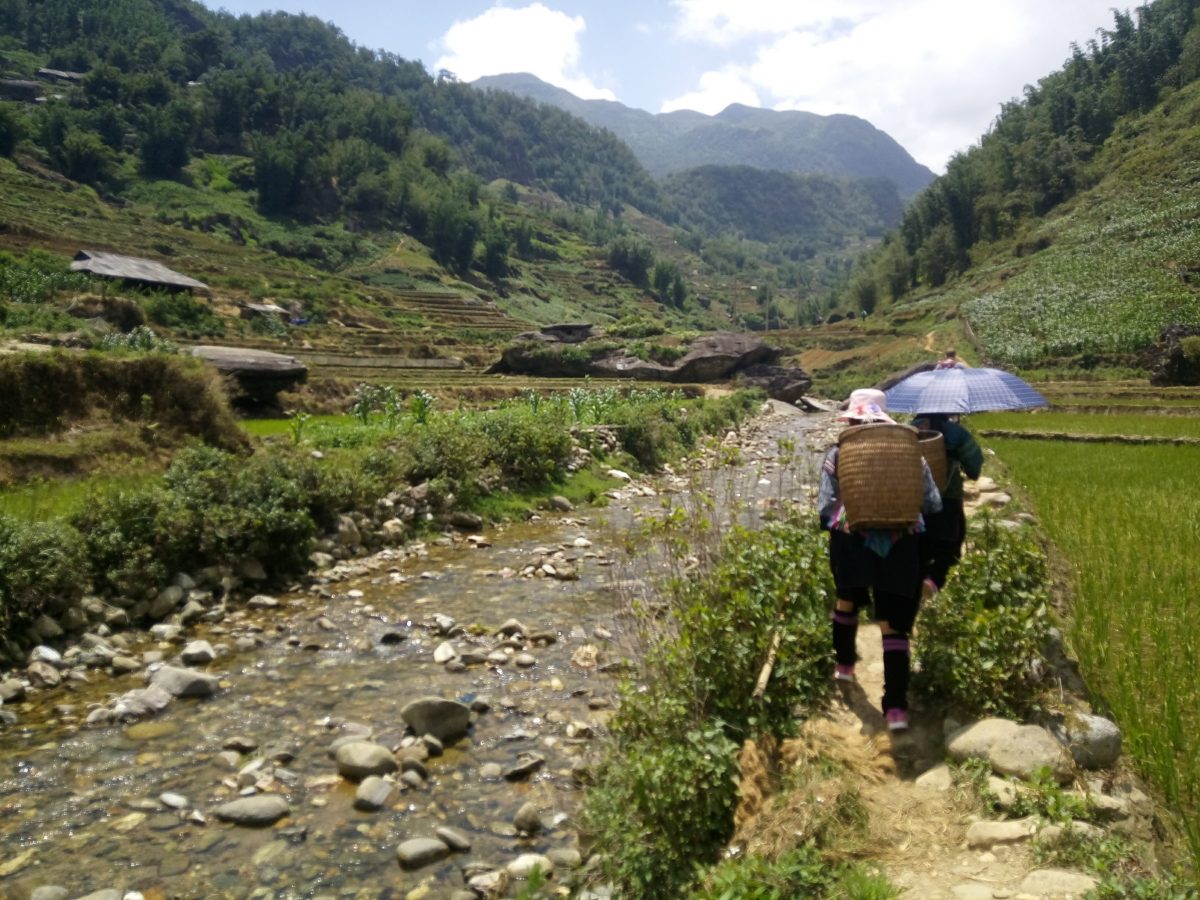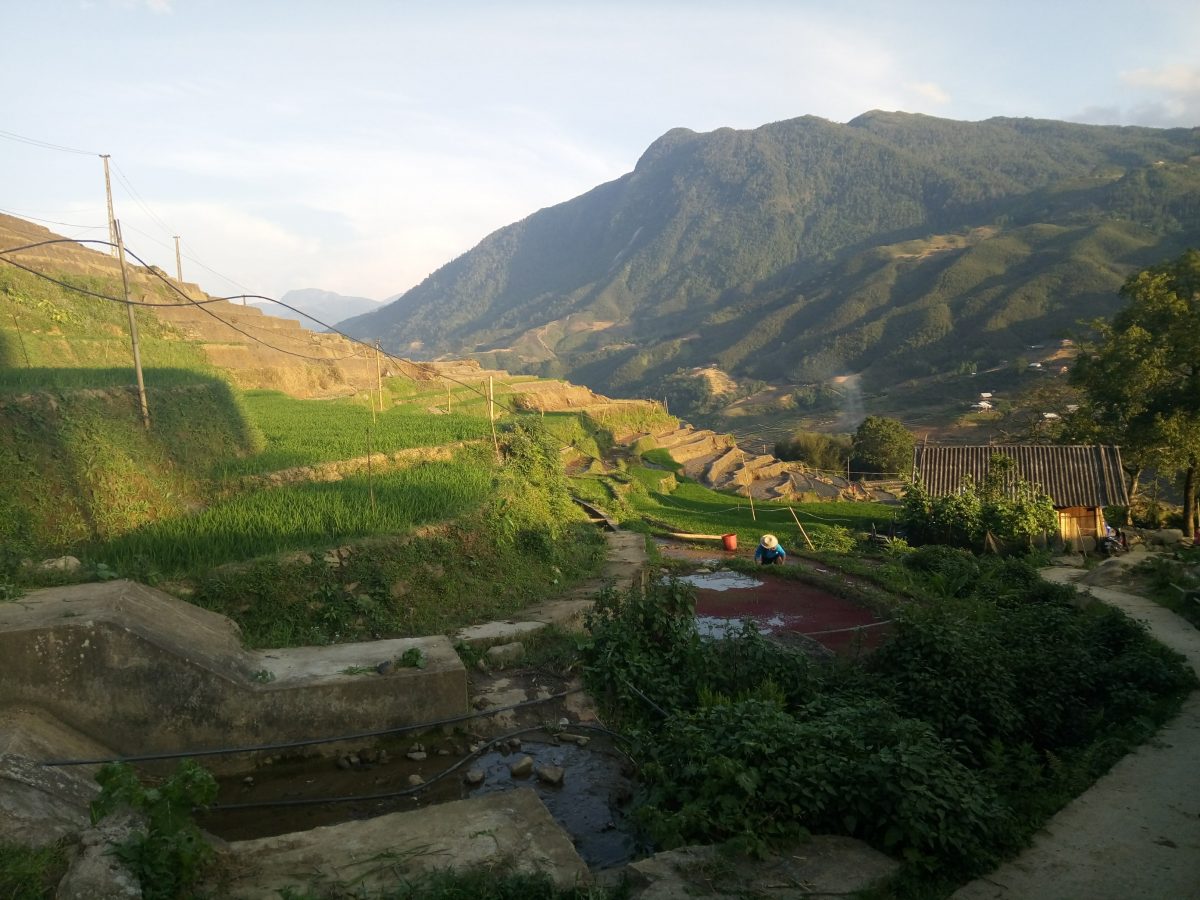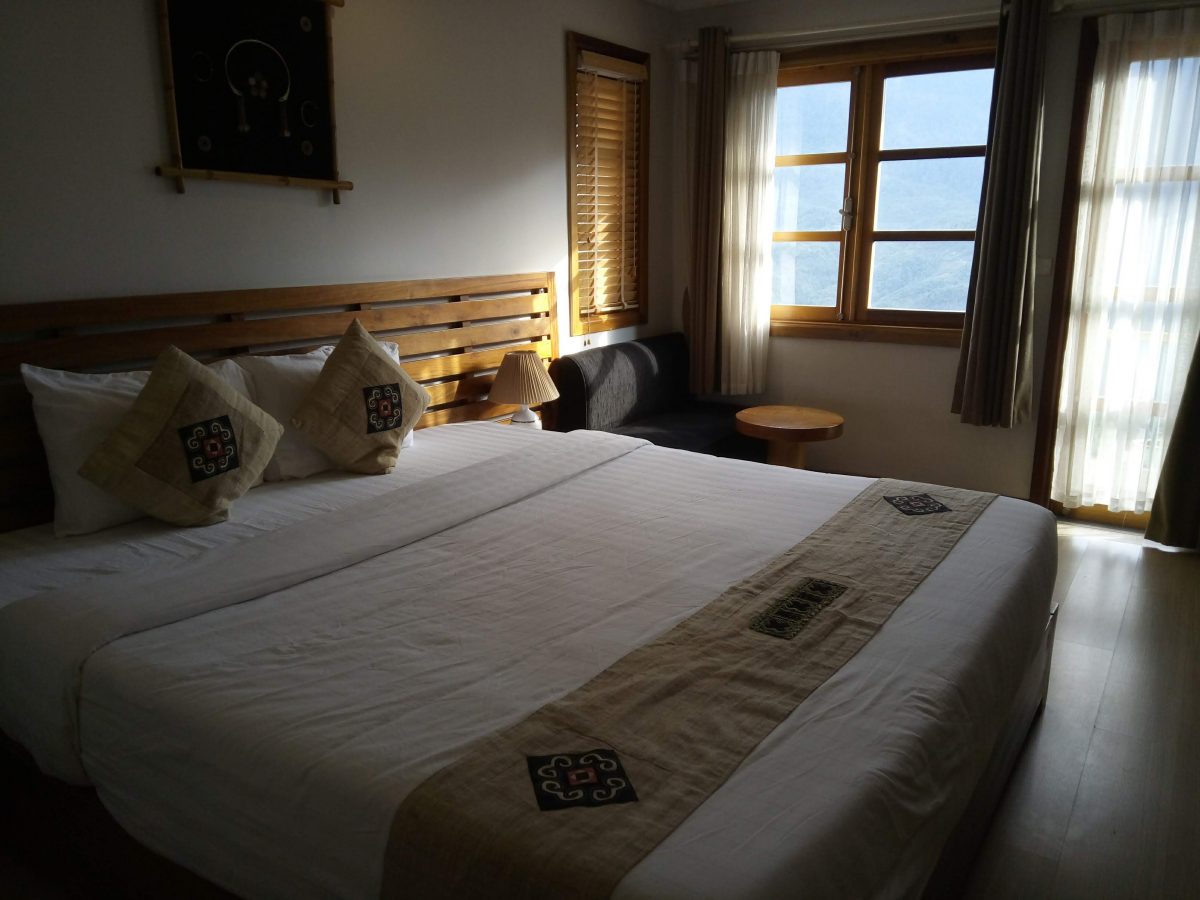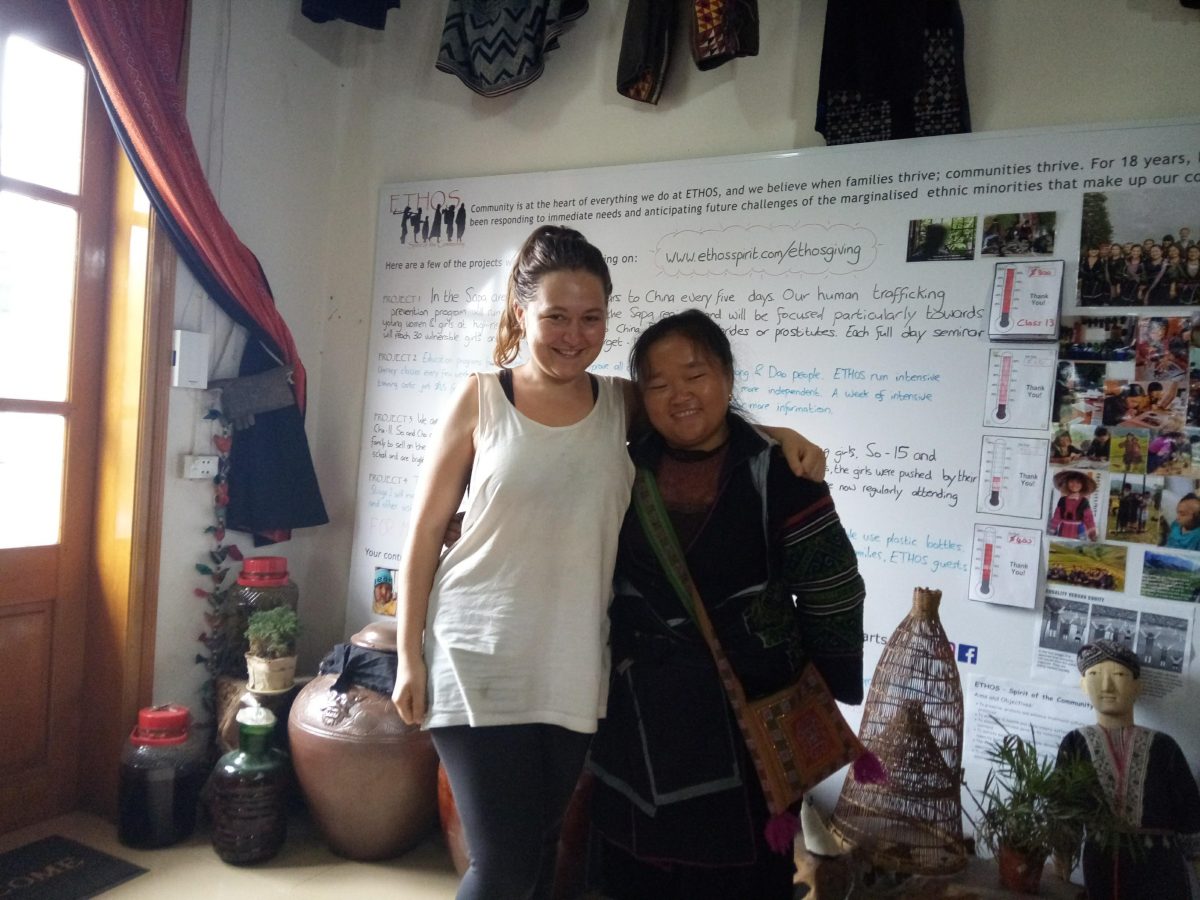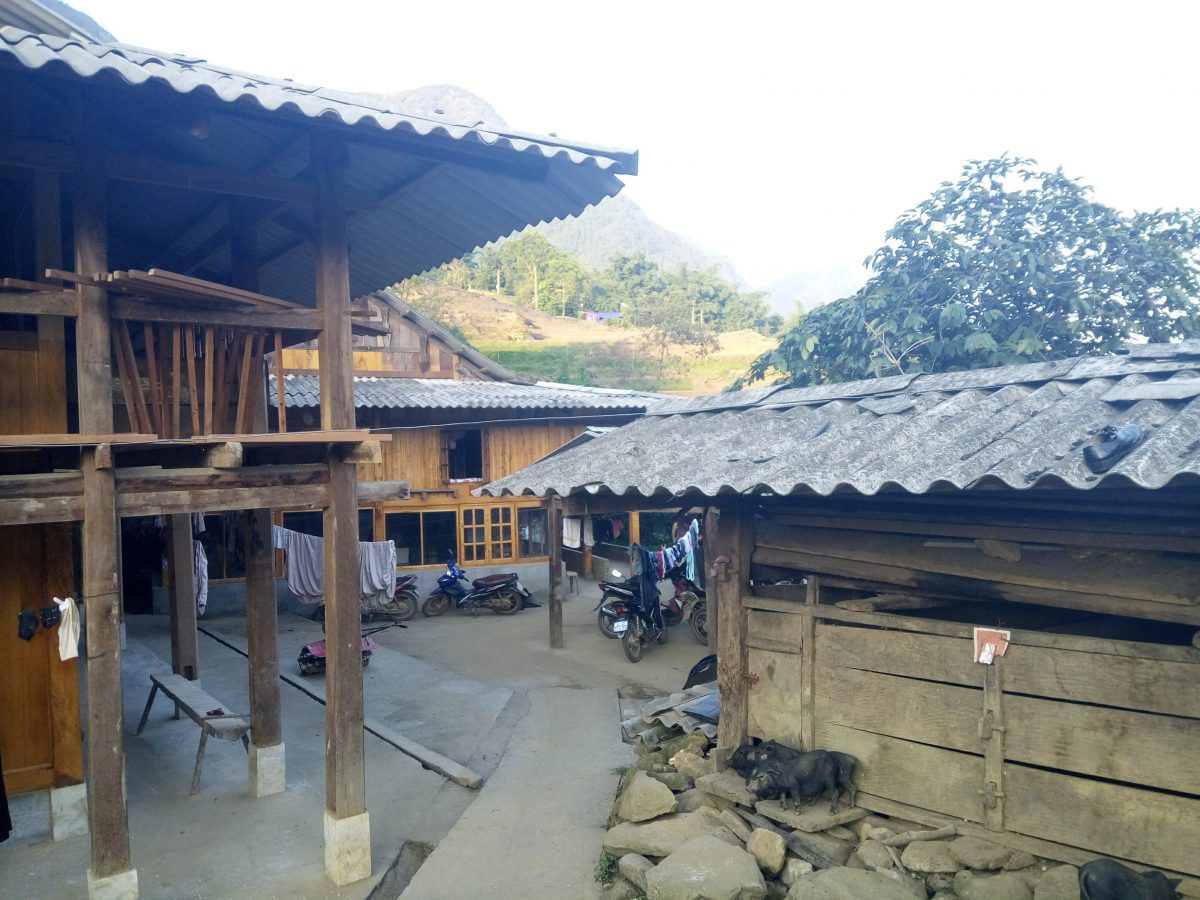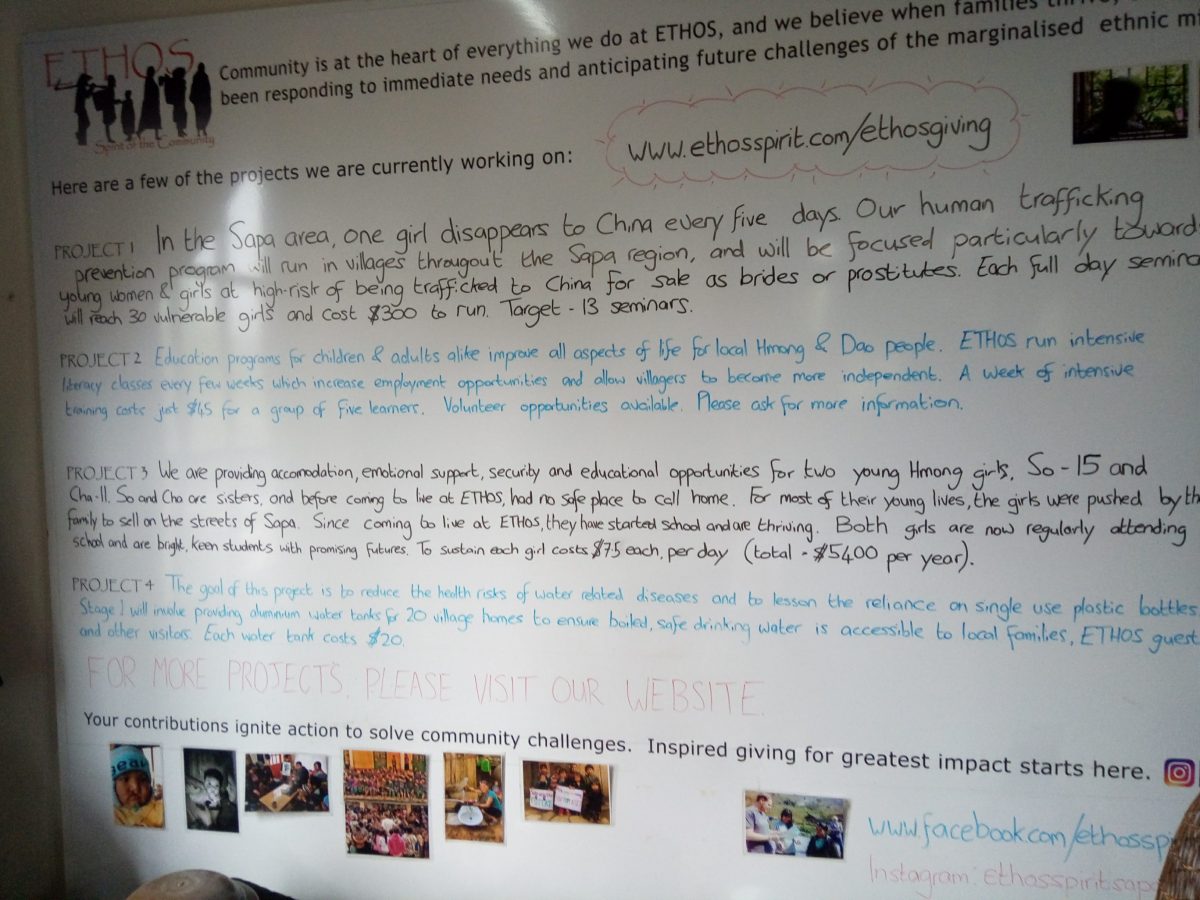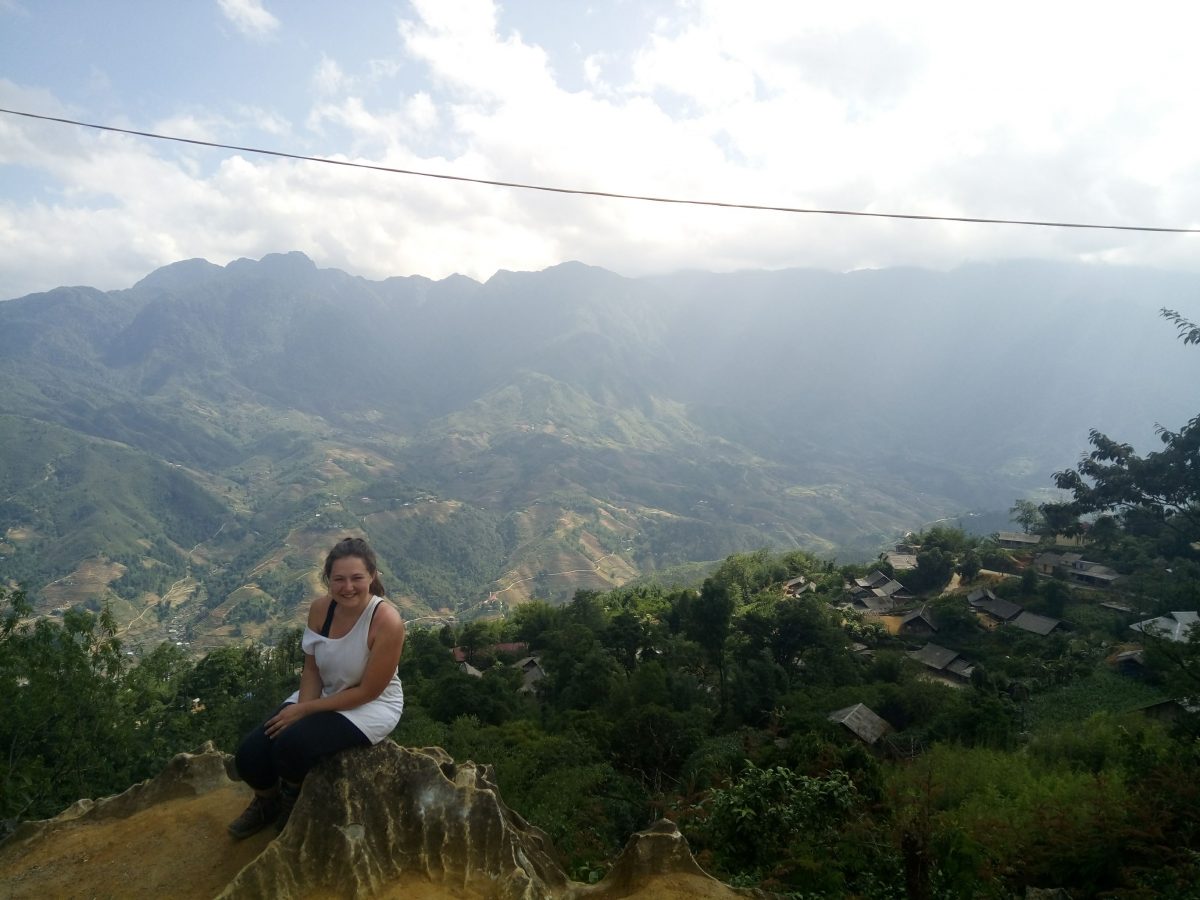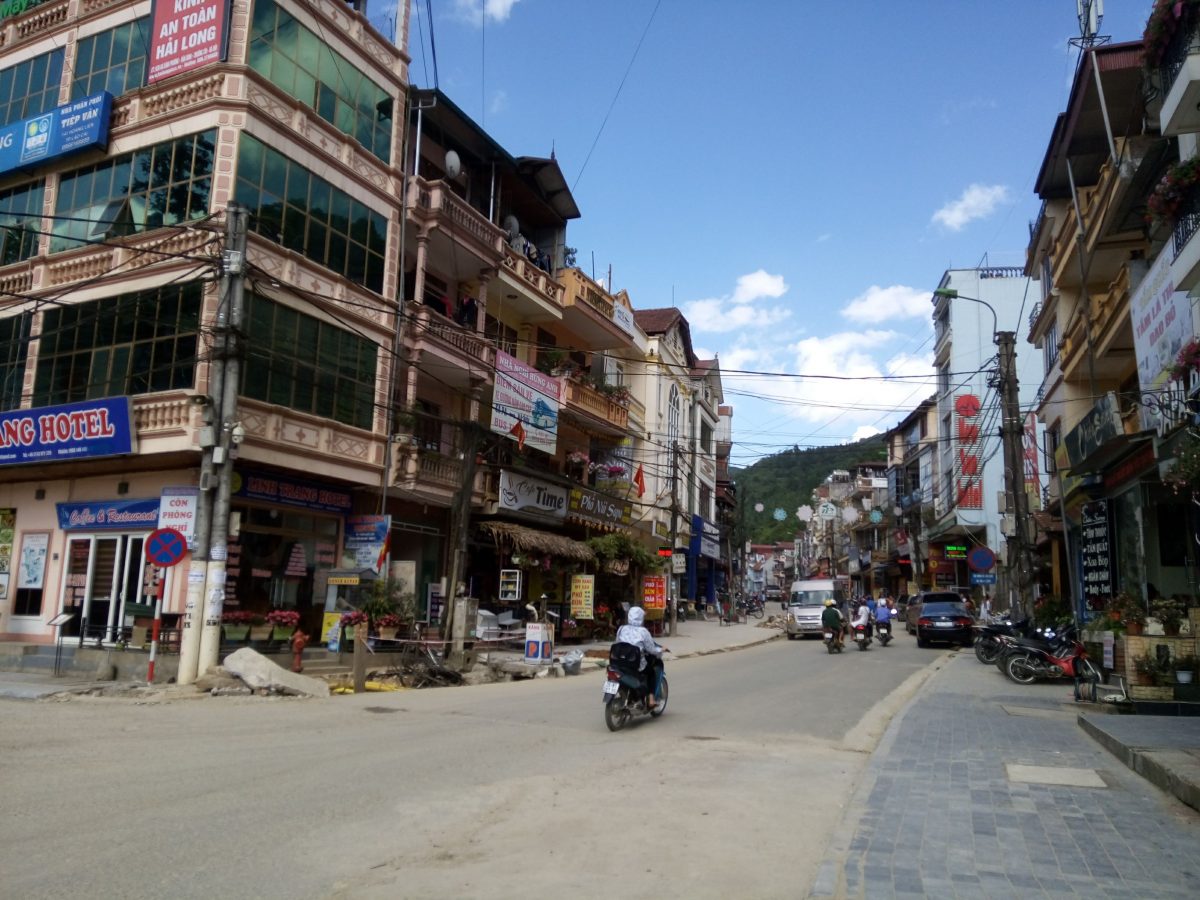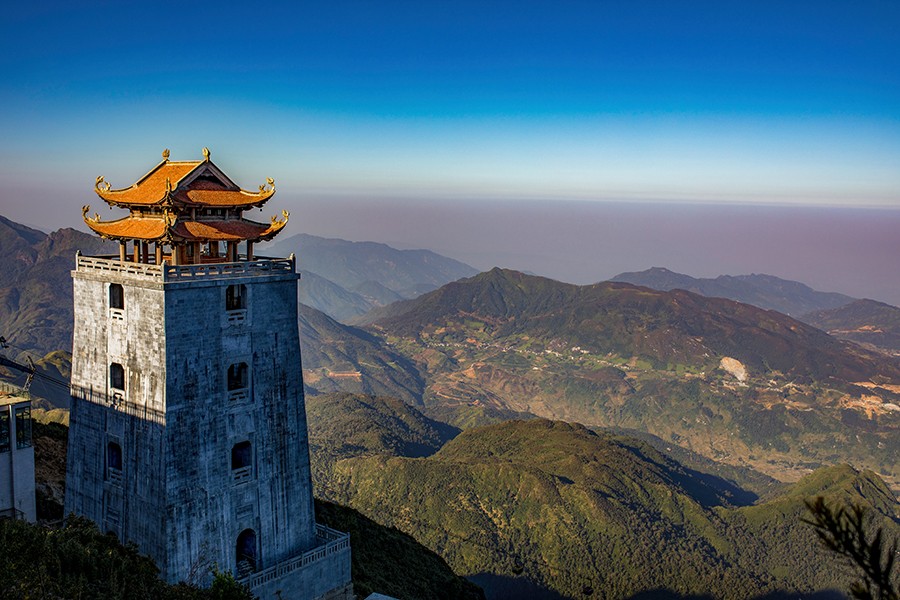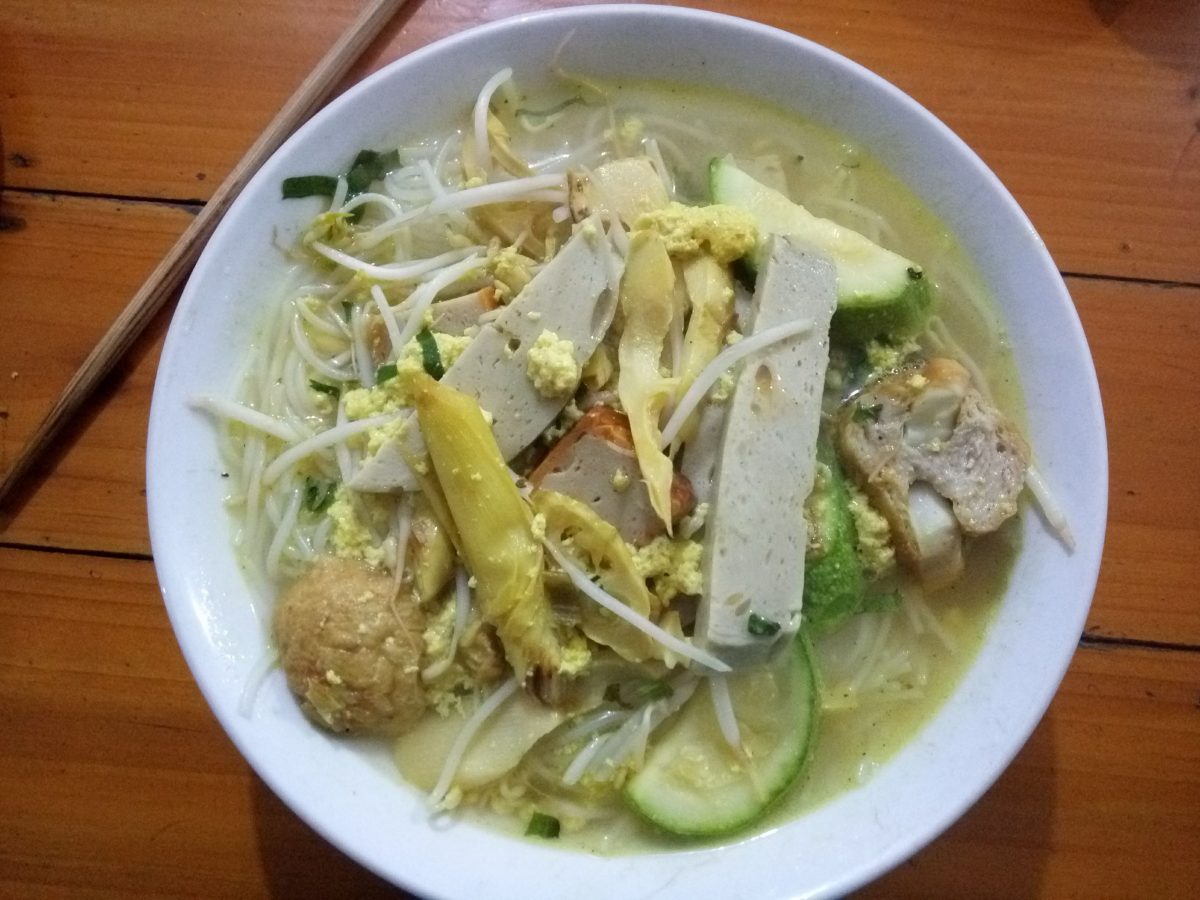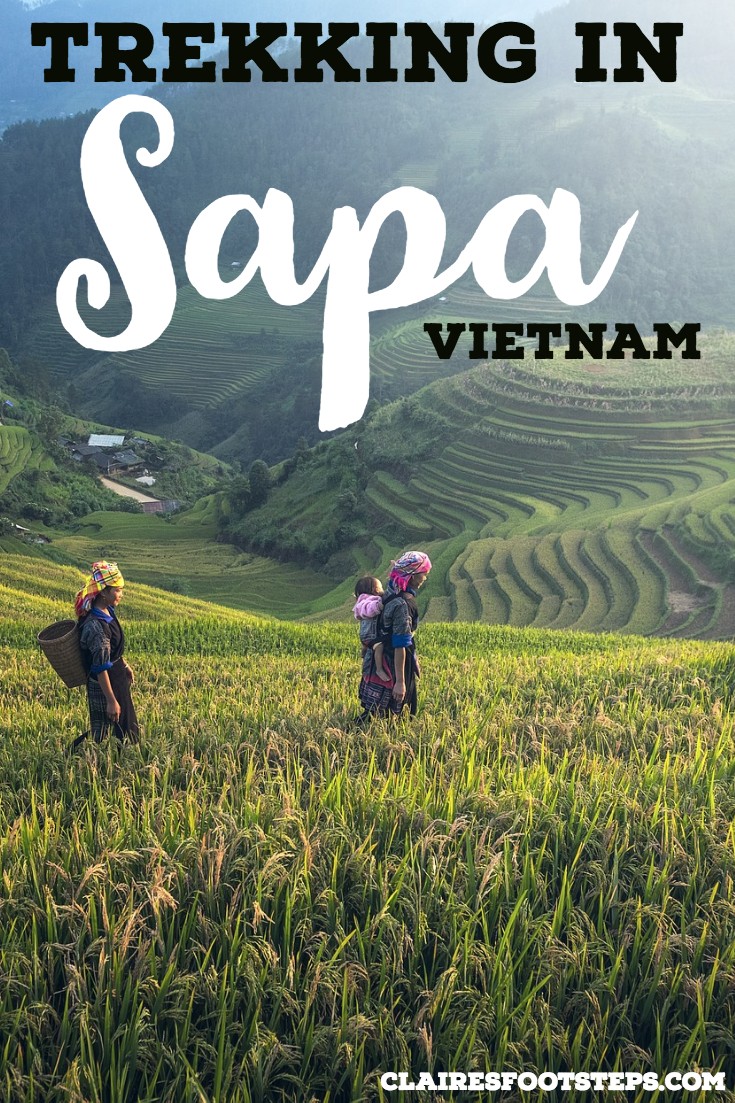Tucked away from the rest of Vietnam’s tourist trail, up some steep mountains and completely unlike the rest of Vietnam climatically is the beautiful Sapa area. Trekking in Sapa is something that features on many traveller’s Vietnam bucket lists, but still not everybody heads up this far.
But it’s well worth the side trip from Hanoi for those who do – in fact, one of the most important things you should know before going to Vietnam is that the real beauty of the country is in its nature.
Beginning from the drive up the mountains from Lao Cai, Sapa has some of the most beautiful scenery in Vietnam; with rolling hills and jagged mountains, rice terraces on an epic scale and small authentic villages. If you’re into trekking Sapa is your perfect destination, with countless routes taking one, two or three days.
After my exceptional trekking in Sapa experience that I had whilst backpacking Vietnam, I thought I’d share the different options for people searching for the best Sapa trekking tours and give you a guide to hiking in Sapa, including what to expect, things to do in Sapa town and what to pack. Think of this post as your one-stop Sapa shop!
Getting to Sapa
Sapa is tucked away in the far north of the country in the mountains, but it is relatively easy to reach from Hanoi, and many people will add it to their itineraries after spending a few days in the capital. If you want to travel directly to Sapa, choose between the Sapa Express – which is comfy and uses the highways, has an English speaking tour guide and even WiFi – or one of Vietnam’s famous night buses. The Sapa Express leaves at 7am and takes around 6 hours to reach Sapa, with a couple of bathroom stops en route. The night buses leave at different times throughout the night.
You also have the option of taking the train to Lao Cai and then transferring to a bus up the mountain to Sapa. The train is more expensive and slower, but is a good option if you want to save money on accommodation and are happy to sleep on the train (you will have a bed). If you’ve got some time in Lao Cai, I recommend going to the Chinese border just to stare into the country (you’ll need a Chinese visa to actually go in) – it’s pretty cool to see.
Most train tickets will also include a bus transfer up to Sapa town. If you have booked onto a Sapa trekking tour, your transport will probably be taken care of.
Click here to browse all Sapa transport options.
Where to Stay in Sapa
Hostel: Venus Sapa Hostel has comfortable beds, friendly owners and even offers room service and complimentary towels. It is located in Sapa town, in close proximity to all of the bars and restuarants. For rates and to book, click here.
Mid-Range: I stayed at the Sunny Mountain Hotel (pictured) while I was in Sapa. The hotel is lovely, with clean, comfy rooms with lots of natural light and some have mountain views. The hotel offers free breakfast and lunch and dinner options in the restaurant – which has fantastic views of the mountains! There is no spa but treatments are available. And it only costs about 750k VND (or $32 USD) for a room for the night! For more information and to book click here.
Luxury: Silk Path Grand Resort & Spa is a great luxury pick, with gorgeous rooms with fantastic decoration and features like a swimming pool, a fitness centre, a restuarnt and a delicious breakfast. Bathrooms are deluxe and contain a bathtub! Click here for rates and to book. Click here for more information and book today.
Trekking in Sapa – What is the Best Sapa Trekking Tour?
The best Sapa trekking tour company for me is, without a doubt, ETHOS. I did a 2 day, 1 night tour with them and honestly, I think it was the best tour that I have ever done. ETHOS focus on sustainable tourism and development, hiring Black Hmong guides – this injects money straight into their local communities.
The owner, Phil, told us a lot about the Black Hmong people and the struggles that they have faced over the years. It reminded me a lot of the story of Aboriginal people in Australia – they have called a land home for thousands of years, but suddenly their natural resources were stripped by settlers and they became an out-casted race. Some of the stories Phil told were incredibly saddening, but it gives me hope that businesses like ETHOS are working to change opinions, open people’s minds and help the local communities while practicing sustainable travel.
Not only does ETHOS provide guides with a job, but they actually have a hands-on approach in developing their villages. All homes that work with ETHOS get drinking water, emotional support and physical support with ideas about developing their homes. They’re looking at bringing running water straight into the villages, which will greatly help local lives.
The ETHOS guides are all women, and if I’m going by my guide’s abilities, can speak excellent English – Phang, my guide is fluent in her native tongue, Vietnamese and English. She can also speak bits of Spanish, Mandarin, French and more!
Another great thing about ETHOS is that the tours are all tailor-made to suit whatever you fancy. We did about 8 hours of hiking on day one, stopping for lunch at Phang’s aunt’s house and ending the day in her own house where I stayed in the guest room. Day two was shorter due to the rain, and we ended up back at ETHOS HQ at about 2pm. I could have done a shorter or longer day, depending on what I wanted.
And, for all my veggie travellers out there, trekking in Sapa with ETHOS is a dream tour. We went to the market first (that part wasn’t so much of a dream, I’ll just say that there were some disturbing meat cuts on offer – if you’re a herbivore like me ask your guide if you can avoid walking through that area) where I could say my likes and dislikes – dislikes obviously being meat, fish and eggs and likes being everything else!
Even though travelling Asia as a vegetarian can be a challenge, there is actually a lot of Asian food that is meat-free in its pure form. So we bought tofu and vegetables – which Phang told me that they eat commonly in her village. She also said that they actually eat a mainly vegetarian diet – so I had nothing to worry about here.
The trek was pretty easy, with some level ground, some inclines and some declines. I did find myself slipping over a bit on the second day (clumsy gal 101) but other than that my trek in Sapa was injury-free. The trek takes you around the rice fields, across some really unique scenery. I’ve visited the Longji rice terraces in China and Tegalang in Ubud, Bali, but trekking in Sapa was on another scale.
We hiked in the mountains for about 7 hours, with a stop at Phang’s aunt’s house for lunch. Phang knew the area like the back of her hand, so she traversed the rice terraces expertly. Sometimes we’d stop off to say hello to giggling children and other locals. Phang also entertained me with many stories and taught me some words in her native language. She was really interested in my travels too – we spoke pretty much solidly for the entire trek. All the guides at ETHOS have a similarly friendly personality and love to get to know travellers.
Homestay in Sapa
I would really recommend any travellers to Sapa to stay at a homestay. In this way, you can experience a native village, get to know the locals, sample some rice wine and spend the night out in nature. It’s a really unique experience and will go down there in some of my top travel memories.
After the trek, I explored the village a little, taking in some of the spectacular views. Then I ate dinner with Phang and her family – if you want to try some home-brewed rice wine now is your chance (I was still laying off the alcohol after falling down a 4 metre concrete flight of stairs a couple of weeks prior – when will my clumsiness end?). After dinner, I went to bed in the cosy guest bedroom with a mosquito net. When I awoke the next morning, Phang was already up cooking breakfast.
What Do the Tours Include?
Ethos overnight tours all include:
- 2x lunch and 1x breakfast and dinner
- Drinking water
- English speaking, local guide
- Overnight accommodation
- Lots of rice wine
- Fully customisable tour route
Things that you might want to take some money for include:
- A tip for your guide – not expected, but appreciated
- Any extra snacks
- Beer if you have the chance to purchase it
- Buying trinkets and souvenirs from either people offering en route or back in the Ethos office – I bought a beautiful hand made purse that I still use today!
Sustainable Travel in Sapa
As mentioned, the ETHOS trekking tour’s money goes straight into helping the Black Hmong communities. But that’s not all they do – they are working on projects to prevent human trafficking (which is heartbreakingly a big problem in the Sapa area), health and hygiene classes and teaching English to communities. They are also providing a lot of support to individuals who have been victims of illness and injury. Their profits go straight into funding these projects.
They are also working towards being environmentally sustainable – educating about the dangers of single use plastics and implementing sustainable practices to help villagers cut down on their uses of plastics. ETHOS works towards conserving the environment and the Black Hmong culture at the same time.
Do you need any more reasons to take this tour?
The only downside of ETHOS is that they only offer private tours, so it can be expensive. If you are a group of 2-6, you can share the cost of the private tour which dramatically decreases it. While I completely understand that this is necessary because of the model where tour-goers stay in their guides’ homes, it might be a bit out of budget traveller’s price ranges.
But if you can afford it, I highly recommend you invest into the best possible trekking in Sapa experience! You can find more about ETHOS and contact them here.
Note: I was not in any way compensated for this tour, I paid full price (and due to where the money is spent, wouldn’t have felt comfortable at accepting a media discount anyway). I just really really loved this tour and would highly recommend it to anyone planning a trip to Vietnam.
Other Tours in Sapa
I really do recommend ETHOS, even if you’re travelling on a budget – sometimes it’s worth spending a little more money on a valuable experience. But if they’re out of your price range, check out these tours.
Muong Hoa Valley Day Tour – This five-hour trek from Sapa travels through the Muong Hoa Valley and goes to the market of the Y Linh Ho village. It also teaches guests about the traditional crafts of the local H’mong people. For more information and to book, click here.
2 day tour in Sapa from Hanoi – From Hanoi, this 2 day trek and bus tour includes pick up and drop off from the Old Quarter of Hanoi, as well as two half days of trekking (you’ll leave Hanoi at 6:45am on day one and arrive back in the city at 9:15pm on day two), accommodation in a hotel in Sapa for the night and some food. It’s a great option if you want to trek for longer than a day, but only have two days to spend. Click here for more information and to book today.
3 day Sapa tour – this option includes 3 days in Sapa, with pick up in the morning of the first day and drop off in the evening of the second. You’ll get to go to a few different places in the Sapa area, including the rice terraces and Ham Rong (Dragon’s Jaw) mountain. The tour includes 2 nights accommodation in a hotel in Sapa. Click here for more information and to reserve your spot.
Hoang Lien National Park Tour – This day tour leaves from Sapa and travels to some of the lesser visited spots, so it’s a great addition to another Sapa tour. You’ll visit the Silver Waterfall, the Love Waterfall and the Tram Tan Pass. The tour also includes a 10km trek. Click here for more information.
What to Pack for your Sapa Trek
Sapa has a very different climate to the rest of Vietnam due to its altitude. When Lao Cai, just an hour away, is sweltering in 30+ degree heat and humidity, Sapa is mild and enjoys fresh, cool air. In the winter, when northern Vietnam is a little cooler, Sapa sometimes sees freezing temperatures and even snow.
This means that your Sapa packing list will vary depending on what time of year you head there. Some things to not forget are:
- Seasonal clothes, depending on what month you are visiting in, and some warm clothes for the night time whatever the season.
- Rain gear – it can rain any time of year in Sapa.
- Mosquito repellent – they’re often out in full force!
- High factor sun cream
- A book to read in the evening
- Any extra snacks
- Sturdy hiking boots and thick socks
- Earplugs
Things to do in Sapa
If you have a bit longer in town, there are some places to explore within Sapa. It is a very touristy town, but beneath that there are still some attractions worth visiting.
Walk around the town
I actually really like Sapa town, despite the hoards of tourists. It’s a kind of fusion between Hanoi and Tibetan villages, and it was nice to just have a stroll around in. Spots to visit are the Notre Dame Cathedral, Dragon’s Jaw Orchid Garden and Ham Rong Mountain. People like to visit the Sapa Market, but I found the meat displays too off putting to warrant a visit after my trek.
Purchase some authentic crafts
There are some beautiful handicrafts and clothes that you can purchase around Sapa, mainly in the style of the native tribes. If you do make a purchase make sure that it is ethical and you purchase from the source.
Ascend Fansipan
The biggest mountain in Vietnam is available to climb up or take a cable car to the top. If you’re climbing it it’s important to not go alone – there have been deaths from people who don’t know what they’re doing (and it’s actually illegal now). There are many tour operators in Hanoi and Sapa who will be able to guide you up and around the mountain. Check out a 2 day tour here.
If you don’t have the time or don’t fancy the trek, you can also take the cable car. It’s 600,000 dong each way, so you’ll only want to go if it’s a completely clear day. The view from the top is well worth it though – you’ll be able to see for kilometres around this area of north Vietnam and into China.
Bike around the area
The best of the rice terraces need to be hiked through to enjoy properly, but they can also be enjoyed by motorbike. The advantage of renting a bike in Sapa means that you can travel around the different villages! There are many rental companies in the Sapa area.
Where to Eat in Sapa (Vegan Restaurants in Sapa!)
Nha Hang Chay Hoa Tam
The woman who runs this restaurant is an absolute delight. She cooks up Vietnamese dishes which are all vegan. From pho to spring rolls, you’ll be able to grab a few different veggie dishes in this joint for reasonable prices.
The Hill Station
A great place to head to if you want a full dining experience, The Hill Station serves up delicious H’mong food. There is a wide selection of dishes for all palates: vegan options include scrambled tofu, fresh veggies and rice. The atmosphere is relaxed and there is a range of drinks available.
Sapa Cuisine Restaurant
This restaurant is somewhat hidden, but it’s a great spot to eat in the town. It serves up local specialities like pumpkin soup and lemongrass stir-fried tofu, with the menu changing seasonally.
Le Gecko
If you’re hankering for some Western food, Le Gecko is the best hangout and dining spot. Serving up good coffee as well as sandwiches and other food items, Le Gecko has some vegetarian options which can be made vegan.
Bars and Cafes in Sapa
There are also plenty of cafes to enjoy Vietnamese coffee, and bars to crack open a beer at the end of a successful hike! These are dotted all over the town – you won’t have to look for to find one.
Where from Sapa?
Because of Sapa’s geographical location, there’s only really three places you can head to from here – back to Hanoi (and then to other places in Vietnam), down to Lao Cai and across to Hekou in China (which is what I did!), or take a multi-day bus from Vietnam to Laos, which ends up in the city of Luang Prabang. This journey has lots of twists and turns and isn’t for the faint hearted – but if you’re after some gorgeous vistas, there’s no journey better.
If you’re just enjoying a short Vietnam itinerary of 10 days or less, I’d recommend sticking around in Northern Vietnam and seeing more of the nature here.
I hope you enjoyed this post about trekking around Sapa! Follow me on Facebook for more, and stay tuned for future South East Asia posts.

